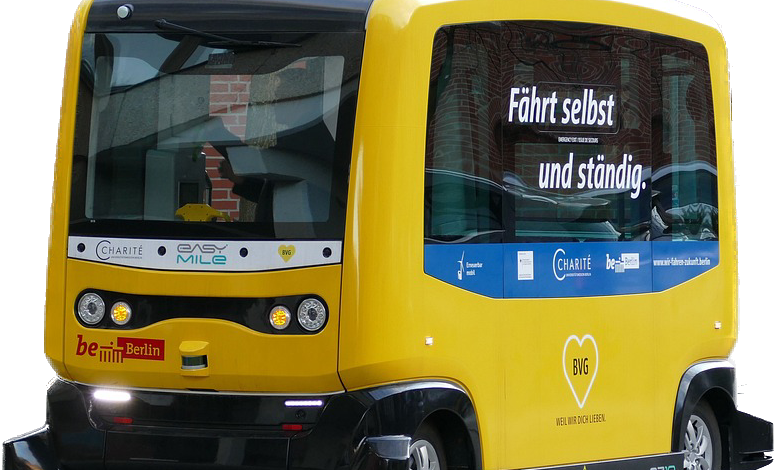The Future Of Autonomous Vehicles vrs. Auto Insurance

The Future Of Autonomous Vehicles vrs. Auto Insurance
Because of the fast developments that have been made in autonomous vehicle technology, the automobile industry is on the edge of a revolution. There is a possibility that self-driving cars will revolutionize the transportation system as we know it, bringing with them the promise of increased road safety, less congestion, and improved traffic flow.
However, with this progression in technology comes a myriad of new issues, most notably in the field of auto insurance. The disruptive power of autonomous vehicles, the possible benefits and problems they offer, and the significant impact they have on the auto insurance market will all be discussed in this article.
Autonomous Vehicles: A Revolution in Transportation
Understanding Autonomous Vehicles:
Autonomous vehicles, often known as self-driving automobiles, are the product of cutting-edge technologies such as sensors, artificial intelligence (AI), and machine learning. These technologies allow vehicles to operate without human intervention. These components cooperate with one another to give autonomous cars the ability to travel and make decisions without the assistance of humans. There are many different levels of autonomy in cars, ranging from Level 0 (no automation) to Level 5 (full automation), with Level 5 being capable of fully autonomous operation in any and all circumstances. Level 0 refers to the absence of automation.
Benefits of Autonomous Vehicles:
The potential for autonomous vehicles to completely transform driving safety is one of the most significant advantages of these vehicles. The vast majority of car crashes are caused by human mistakes, which is something that autonomous vehicles hope to eliminate. These cars can drastically reduce the number of accidents that occur and save countless lives thanks to their superior sensors and decision-making processes driven by AI.
In addition to this, self-driving cars have the potential to reduce the amount of time spent sitting in traffic. It is possible to enhance traffic flow, which will result in smoother rides and shorter commuting hours. This can be accomplished by optimizing driving patterns and lowering the number of instances of sudden stops and starts.
Challenges and Risks
Liability and Legal Considerations:
As autonomous vehicles become more prevalent on the roads, determining liability in the event of an accident becomes a complex issue. Should the responsibility lie with the vehicle’s owner, the manufacturer, or the software developer? Resolving these questions requires innovative legal frameworks and regulatory adaptations.
Data Security and Privacy Concerns:
Connected autonomous vehicles generate an abundance of data, ranging from real-time navigation information to personal user data. Ensuring the security of this data and protecting user privacy pose significant challenges. Striking a balance between utilizing data to improve vehicle safety and safeguarding sensitive information is crucial.
Impact on Auto Insurance
Changing Insurance Landscape:
The introduction of self-driving automobiles has the potential to cause significant upheaval in the conventional auto insurance market. As a result of improvements in safety, there may be less of a need for traditional auto insurance as the number of incidents falls. Instead, there is likely going to be a move toward manufacturer liability and product liability insurance.
Insurance Premiums and Pricing:
Insurance premiums for driverless cars will be determined by a number of factors, including the vehicle’s level of autonomy, the vehicle’s safety rating, and the frequency and severity of accidents. Insurance costs are likely to be reduced for automobiles that have higher degrees of automation and a demonstrated history of being safe. In addition, as accidents become less common, insurance companies may investigate usage-based insurance (UBI) models, which determine the cost of a policy’s premium based on the driving habits of the policyholder.
New Insurance Products and Approaches
Usage-Based Insurance (UBI) for Autonomous Vehicles:
UBI, which is already gaining popularity in traditional insurance, is adaptable to the unique usage patterns of autonomous vehicles, therefore it is a potentially useful coverage option. Pay-per-mile or pay-as-you-go insurance models can be introduced to give fairer pricing that is based on the actual usage of the vehicle, and either one of these models can be used.
Product Liability Insurance for Manufacturers:
It is anticipated that the demand for product liability coverage by producers of autonomous vehicles will increase since attention is shifting away from the guilt of individual drivers and toward the risk of faults in the vehicles themselves. Because of this coverage, manufacturers will be protected from any legal claims that may come up as a result of defects in the vehicle’s hardware or software. These vulnerabilities may develop.
Cyber Insurance and Data Breach Protection:
As autonomous vehicles grow more connected to the internet and dependent on the flow of data, cyber insurance will play an increasingly important role in protecting against the possibility of data breaches or cyberattacks, both of which could damage critical information and the ability to manage the vehicle.
Preparing for the Autonomous Future
Government Policies and Regulations:
Governments worldwide must actively participate in shaping the future of autonomous vehicles and insurance. Establishing clear regulations and standards will provide a stable framework for insurance companies to adapt and innovate.
Technological Advancements in Insurance:
Technology is something that insurance firms absolutely need to get on board with if they want to remain competitive. The use of artificial intelligence and machine learning in underwriting and policy customization has the potential to expedite operations while also ensuring accurate risk assessment.
Conclusion
The future of driverless vehicles has both exciting possibilities and difficult obstacles. While these cutting-edge vehicles have the potential to revolutionize transportation and increase road safety, the auto insurance business faces some new and interesting difficulties as a result of their introduction into the market.
The proliferation of self-driving cars brings about new challenges for insurers and policymakers, including new liability and legal issues, data security and privacy concerns, and a shifting insurance market. These challenges need insurers and policymakers to adapt and innovate. We can unlock the full potential of autonomous vehicles and ensure a secure and efficient auto insurance landscape for the future if we embrace technology breakthroughs and collaborate on effective laws and regulations. By doing so, we will unlock the full potential of autonomous vehicles.

READ:





